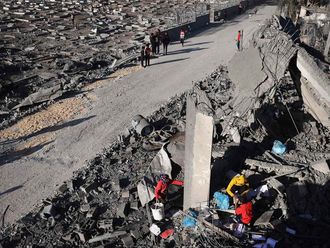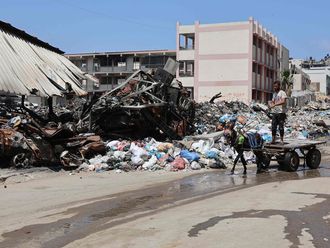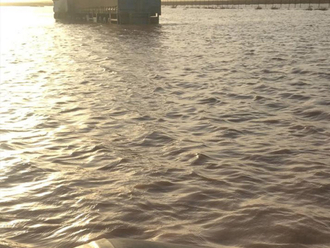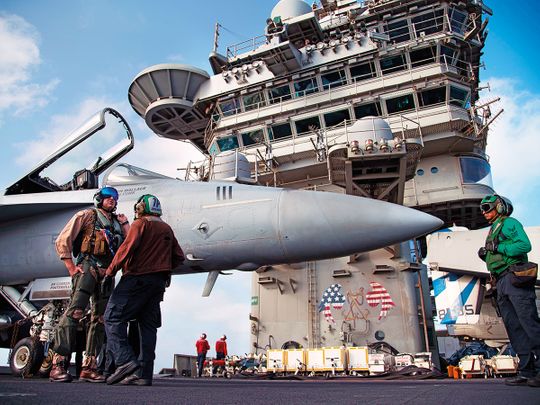
Dubai: As the US tries a new way to protect shipping across the Arabian Gulf amid tensions with Iran, it finds itself sailing into uncertain waters.
For decades, the US has considered the waters of the Gulf as critical to its national security. Through the gulf’s narrow mouth, the Strait of Hormuz, 20 per cent of all crude oil sold passes onto the world market. Any disruption there likely will see energy prices spike.
The US has been willing to use its firepower to ensure that doesn’t happen. It escorted ships here in the so-called 1980s “Tanker War”. America fought its last major naval battle in these waters in 1988 against Iran.
Now, the US Navy is trying to put together a new coalition of nations to counter what it sees as a renewed maritime threat from Iran. But the situation decades later couldn’t be more different.
Fatigue
The US public is fatigued from years of Mideast warfare after the September 11 attacks. Meanwhile, Iran finds itself backed into a corner and ready for a possible conflict it had 30 years for which to prepare.
It stands poised this week to further break the terms of its 2015 nuclear deal with world powers, over a year after President Donald Trump unilaterally withdrew America from the accord and imposed crippling sanctions on the country.
“It is plausible to imagine a scenario where these forces stumble into some type of accidental escalation,” said Becca Wasser, a senior policy analyst at the RAND Corp. who studies the region.
“While US efforts are intended to deter, Iran may view increased US maritime presence as offensive in nature or as preparation for a larger attack on Iran and respond accordingly.”
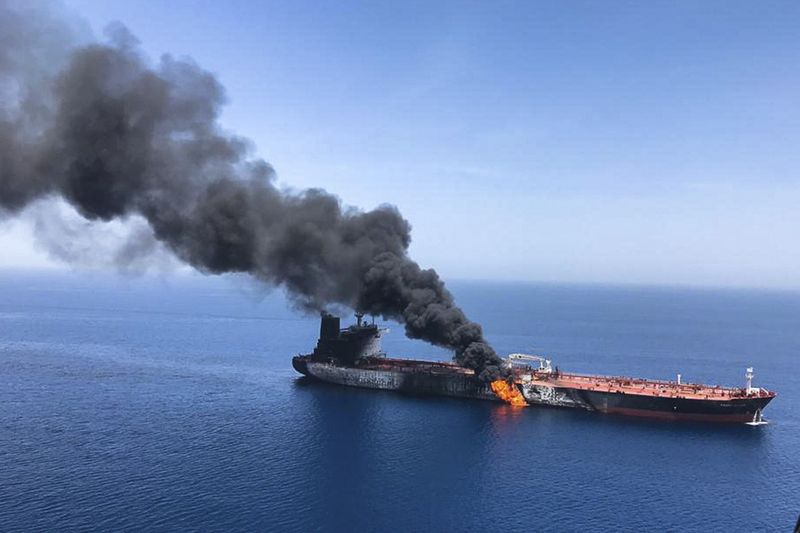
___
The Sentinel Programme
The US-led Sentinel Programme aims to secure the broader Gulf region. It includes surveillance of the Strait of Hormuz and the Bab Al Mandeb, another narrow strait that connects the Red Sea and the Gulf of Aden off Yemen and East Africa. Smaller patrol boats and other craft will be available for rapid response.
The plan also allows for nations to escort their own ships through the region, said Cmdr. Joshua Frey, a spokesman for the US Navy’s 5th Fleet, which oversees the region. For now, the Bahrain-based 5th Fleet is not escorting US-flagged ships through waters, though that remains a possibility, he said.
So far, only Australia, Bahrain and the United Kingdom have said they’ll join the US programme. India has begun escorting its own ships independently of the US coalition, while China has suggested it could get involved as well.
The US Navy has sent Arleigh Burke-class guided missile destroyers to chokepoint positions, like either end of the Strait of Hormuz. There, they observe ship traffic and monitor for anything unusual as drones and other aircraft fly surveillance routes overhead, Frey said.
Some of what the US plan calls for already falls under the routine operations of the 5th Fleet, which has been in the region since 1995. US Navy ships coming in and out of the Gulf often find themselves shadowed by Iranian Revolutionary Guard vessels. Some incidents have seen the US fire warning shots or Iranian forces test-fire missiles nearby.
What’s different now though is shippers find themselves under attack. The US blames Iran for the apparent limpet mine explosions on four vessels in May and another two in June sailing in the Gulf of Oman near the Strait of Hormuz, something Iran denies being behind. Iran also seized a British-flagged oil tanker and another based in the United Arab Emirates.
Facing growing financial pressure from US sanctions on its oil industry, Iran has sought diplomatic support from those still in the deal, while increasing pressure militarily as well. Even President Hassan Rouhani, who had supported rapprochement with the US in the run-up to the 2015 deal, has been threatening to close off the Strait of Hormuz if Tehran can’t sell its oil abroad.
That raises the stakes for conflict.
“The United States is not seeking a military confrontation, and are certainly not soliciting international support for any provocation,” Frey said. “With that said, while the intent of our presence is deterrence and stability, we are prepared to defend (coalition) member nations’ interests from attacks in the maritime domain.”
But it won’t be just the United States involved if things spin out of control, nor will it likely be confined to the high seas.
Militarised region
Since the 1980 Carter Doctrine, the US has vowed to use its military power to defend its interests in the oil-rich Gulf. That saw America enter the “Tanker War” towards the end of the 1980s Iran-Iraq war, in which US naval ships escorted reflagged Kuwaiti oil tankers. It culminated in a one-day naval battle between Washington and Tehran, and also saw America accidentally shoot down an Iranian passenger jet, killing 290 people.
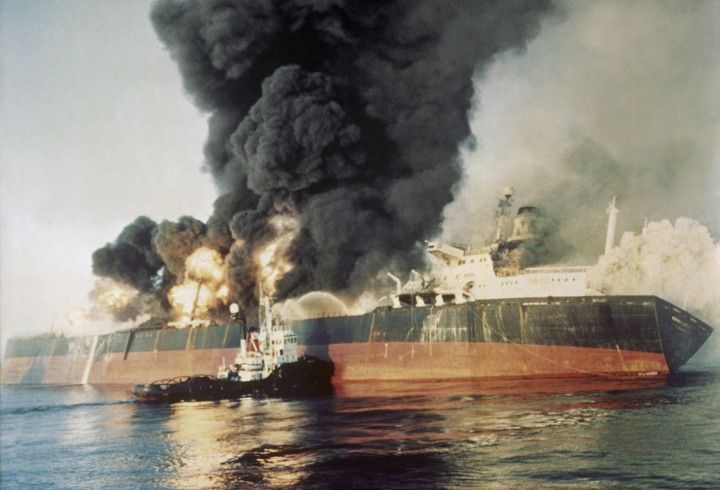
The 1991 Gulf War, in which a US-led coalition expelled Saddam Hussain’s troops from Kuwait, further cemented America’s presence, as did its later wars in Afghanistan and Iraq.
Dangers ahead
One of the immediate dangers is in the response to Iran itself. During the Somali piracy crisis of the 2000s, the rush of navies to the region saw fishermen wrongly targeted for attack in at least one incident, said Salvatore R. Mercogliano, a former merchant mariner and associate professor of history at North Carolina’s Campbell University.
Adding additional forces, especially those that may not respond to a single command and exercise different rules of engagement, could raise the risks of a conflict, Mercogliano said. Trying to run convoys of ships through the areas also would slow down traffic and delay shipments. Meanwhile, the Guard’s small fast boats easily can be missed among the fishermen and traditional dhow ships moving through the busy waters.
“It is a very difficult area to track any traffic just due to the huge amount of numbers in that area,” Mercogliano said. “If you only have a few ships on patrol, a few air assets, a few drone assets, it’s very easy to get lured one way or another and miss something.”
Meanwhile, US authorities warn that ships in the region have reported “spoofed bridge-to-bridge communications from unknown entities falsely claiming to be US or coalition warships.” Ships also have reported interference with their GPS systems, according to the US Transportation Department’s Maritime Administration. That could see ships accidentally enter Iranian territorial waters and offer a pretence for its forces to board.
For international business, the risks could be clearly seen after crude oil prices jumped nearly 4 per cent after the June limpet mine attacks in the Gulf of Oman. Even though the majority of the oil and natural gas passing through the Strait of Hormuz now heads to Asia, prices could spike again.
Insurance premiums for shipments shot up in the area after the June limpet mine attacks by 10 per cent, with additional war-risk premiums costing around $100,000, according to the market data firm Refinitiv.
For mariners in the region, the Strait of Hormuz has been declared a temporary extended risk zone, qualifying them for a bonus and higher death and disability coverage. And while the mariners may be on Western-owned or -flagged vessels, many come from poorer countries in Eastern Europe or Asia. The 23 crewmembers aboard the Stena Impero, the British-flagged oil tanker seized by Iran on July 19 and still held today, are Filipino, Indian, Latvian and Russian.
“The normal seafarers are the ones being caught up in this geopolitical game,” said Jacqueline Smith, the maritime coordinator for International Transportation Workers’ Federation.


